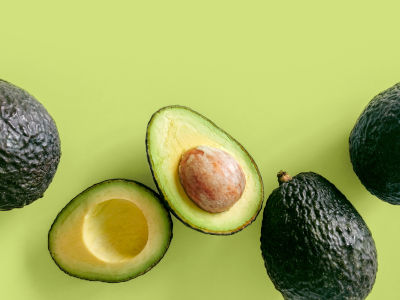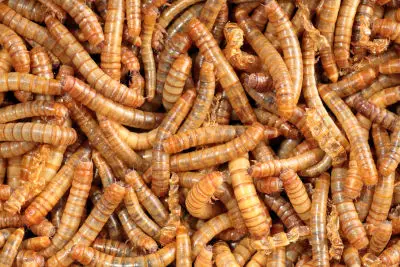Masoala Panther Chameleon (Facts, Diet, Care)
If you are interested in Chameleons you may have heard people talk about Masoala Panther Chameleons. They are rare, but well worth it if you can get one. Let me explain.
What is the Masoala Panther Chameleon? The Masoala Panther Chameleon is effectively a Panther Chameleon but, from a very specific locale. Panther chameleons (Furcifer Pardalis) are large species of the Chameleon. They are typically found in Madagascar and there are over 20 different variations of this species.
| Are these foods dangerous for your Beardie? | |
| Avacado? Click here to learn, from this guide, if this food is dangerous |  |
| Superworms? Click here to learn, from this guide, if this food is dangerous |  |
Now you know a bit about them now, let me go deeper. Let me explain exactly were Masoala is, what they eat, other variations of the Panther Chameleon (Click here for my reasons why they need a tall enclosure) and so much more.
Where is Masoala?
Masoala is a peninsula on the Eastern coastal area of Madagascar, hence the name of this lizard variation. They have a distinct coloration. Their body parts show a combination of yellow, orange and black.
Where can you get these Masoala Panther Chameleons?
This type of Chameleon is very rare. Because of this keen breeders have found it hard to get hold of females. So, some breeders have resorted to mixing these lizards with other locales.
This is so that they can sell them on, unfortunately sometimes falsely claiming they are genuine Masoala Panthers.
Because they are quite rare, the economics of supply and demand means the prices for them is quite high. So if you can find a genuine one, make sure that you have the budget to support this.
What different panther chameleon locals are there?
As discussed earlier, there are over 20 different variations. Let me give you a list and break down of some of them now:
Ambanja
This type of Chameleon is found in the Northwest of Madagascar and has a typical color variation of blue, green and red.
Ambato
Also found in the northwest area of Madagascar, but just north of Ambanja. It is sometimes referred to as the “Turquoise Blue” or even the “Blue Diamond” Panther Chameleon.
Ambilobe
Very close to Ambanjo, and also near Diego Suarez, this Madagascan Panther it is often referred to as the Sirama (a town close by) or “Picasso” Panther.
There are many more so I will give you a list of the rest:
- Ambodirafia
- Ampiskiana
- Andapa
- Ankaramy
- Ankify
- Diego Suarez
- Joffreville
- Maroantsetra
- Nosy Ankarea
- Nosy Be
- Nosy Boraha
- Nosy Faly
- Nosy Mitsio
- Nosy Radama
- Reunion
- Sambava
- Tamatave
How big are these chameleons?
All being well and you have a healthy adult Masoala Panther Chameleon you can expect it to grow up to 18 inches in length. That is from its nose to the tip of his tail. The female is slightly smaller and you can expect it to grow up to 14 inches in length.
With regards to the weight, for the adult male, you can expect to grow up to 180 grams and a lady female up to 140g.
What is the best enclosure for them?
Best to be given a wooden enclosure. The reason for this is because wood is an excellent material to insulate the heat.
Masoala Panther Chameleons like a very specific heat requirement. Wood is a perfect option for them to retain the heat and humidity they need.
Why I don’t suggest Glass Enclosures
Glass enclosures have a habit of not retaining the heat as well as wood. And that’s the reason why I would suggest using a wooden one instead of glass.
However, you need to make sure that the wooden vivarium is well ventilated to keep them happy in there.
Ideal Size
With regards to the heat. It needs to be at least 36 inches in height. There are two reasons for this:
- Contrasting Heat
- Climbing
Number one, they like to have a heat variation within the enclosure. The top level being the hottest and then a gradient of heat as it reduces to the ground level.
Lastly, they appreciate climbing. So they need enough of vertical space to keep them happy.
Lighting and temperature requirements
Masoala Panther Chameleons originate from the rainforest of Madagascar. Therefore, it is important to keep their habitat as close to this as humanly possible.
In captivity, they bask in the natural sun allowing them to receive a lot of UVB rays. Therefore, you need to provide a good strong UVB light to maintain their requirements.
UVB lighting is very important because it allows them to metabolize the calcium which is put into their body from their diet. Without this, they will not be able to process the calcium that they need and it could lead to health issues.
The best UVB lights will have a strong five to six percent rainforest jungle strength UVB. There are two tubes that are recommended to provide this level of rays. The first one is the T8 (click to see the price on Amazon) and then there is the T5 (Click for reviews on Amazon).
The T8 will give you twice the Range and is more efficient than the T5. It will cost you slightly more but you will find that it will last longer as well. Meaning it is more efficient and more value for money.
For example, with the T5 you need to swap the bulbs at least every six months however with the T8 that could be every 12 months. For that reason, the T8 is a good idea if you have the budget to support it.
What substrate do they require?
Some people say that loose substrate can be dangerous because they can be swallowed by the lizard. However, many keepers have found using bark chips (click here for reviews on Amazon) as a reliable substrate.
Obviously, the decision is yours which substrate you choose. But the bark chips have been known to be a good choice.
What decoration is required in the enclosure?
It is important to try and replicate the rainforest environment as close as possible.
For that reason, the top half of the vertical enclosure should be well decorated with vines plants and greenery to make your chameleon feel at home.
Trailing plants and upright plants are a good option for this. It will make your chameleon feel at home and also allow them to exercise and enjoy climbing which is one of their good pastimes.
Another benefit of this decoration is, when you spray the mist into the enclosure on a daily basis (as you should be) it will allow the water droplets to run off these plants and greenery. This will provide a valid and required water supply for them.
Water and humidity requirements
As discussed earlier you should be spraying water for misting, as it is called. This is directly into the enclosure on a daily basis. This is important because they will drink the water droplets that fall from the plants and greenery that have been listed at the top end of the enclosure.
The humidity levels should remain at approximately 50% in the enclosure
You can measure the humidity by using a hydrometer (click to see the reviews on Amazon):
In addition to this, you can also train some chameleons to drink from a dripper system as well.
Food and diet requirements
Their main source of food is live insects in particular brown crickets. But you can also offer them locusts and also black crickets. They will even appreciate Dubia cockroaches.
On rare occasions, just to provide a bit of variety, you can also offer them mealworms or wax worms.
Related questions:
Are Masoala panther chameleons good for beginners? Yes, in general, they are quite docile and well behaved. However, Chameleons do not appreciate being handled (click for an article on Yemen Chameleon handling) especially not on a regular basis.
It is possible to handle them if you know what you were doing. But, you need to really think of these chameleons as display animals like a fish that is how they prefer to live.


